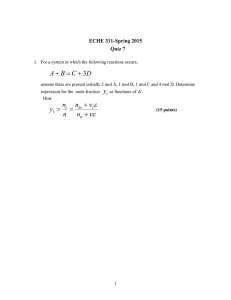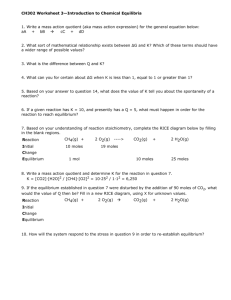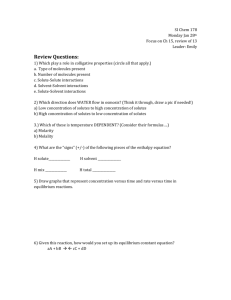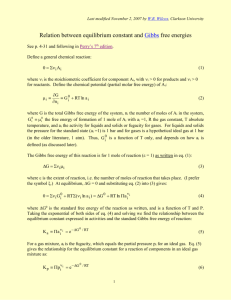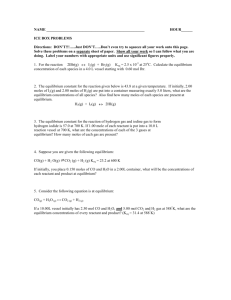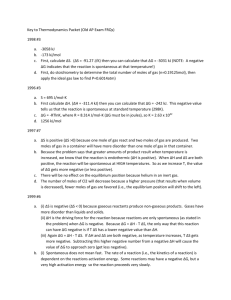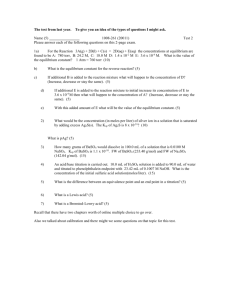Chemical Equilibrium in Ideal Gas Mixtures
advertisement
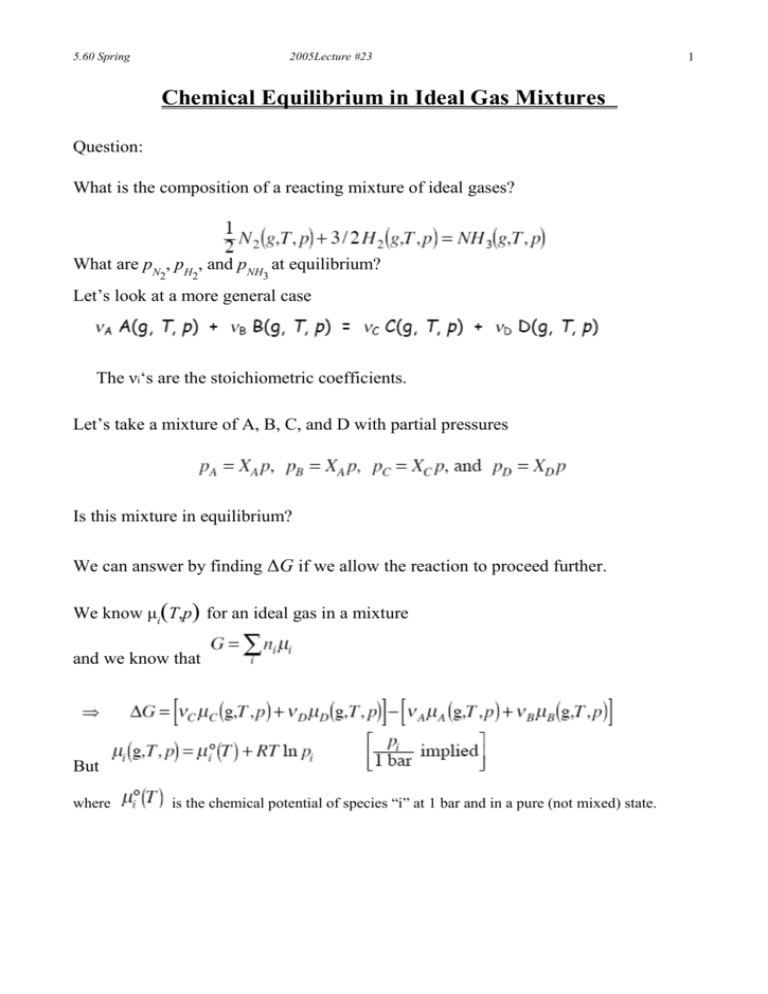
5.60 Spring 2005Lecture #23 Chemical Equilibrium in Ideal Gas Mixtures Question: What is the composition of a reacting mixture of ideal gases? What are pN , pH , and pNH at equilibrium? 2 2 3 Let’s look at a more general case The νi‘s are the stoichiometric coefficients. Let’s take a mixture of A, B, C, and D with partial pressures Is this mixture in equilibrium? We can answer by finding ΔG if we allow the reaction to proceed further. We know μi(T,p) for an ideal gas in a mixture and we know that But where is the chemical potential of species “i” at 1 bar and in a pure (not mixed) state. 1 5.60 Spring 2005Lecture #23 2 where and is the change in free energy associated with transforming pure reactants into pure products. Or If then the reaction will proceed spontaneously to form more products then the backward reaction is spontaneous No spontaneous changes Define => Equilibrium the equilibrium constant and Note from this that Kp(T) is not a function of total pressure p. 5.60 Spring 2005Lecture #23 3 It is KX = pwhich is KX( p,T) . Recall that all pi values are divided by 1 bar, so Kp and KX are both unitless. ___________________________________________________________ Example: T=289k P=1 bar Initial # Of moles # moles at Eq. Total# moles at Eq. = (a – x)+(b – x)+ 2x = a + b Mole fraction Let’s take a = 1 mol and b = 2 mol We need to solve A) Using approximation method: 5.60 Spring 2005Lecture #23 4 K << 1, so we expect x << 1 also. Assume B) Exactly: The “-“ sign gives a nonphysical result (negative x value) Take the “+” sign only => x = 0.0044 mol (same) ______________________________________________________________________________ Effect of total pressure: example N2O4(g) = 2 NO2(g) Total # moles at Eq. = n – x + 2x = n + x 5.60 Spring 2005Lecture #23 5 where α = x /n is the fraction reacted ∴ If p increases, α decreases Le Chatelier’s Principle, for pressure: An increase in pressure shifts the equilibrium so as to decrease the total # of moles, reducing the volume. In the example above, increasing p shifts the equilibrium toward the reactants. ______________________________________________________________________________ Another example: Total # moles at Eq. = 2 – 2x + 1 – x + 2x = 3 – x so we expect 5.60 Spring 2005Lecture #23 In this case, if p↑ then x↑ as expected from Le Chatelier’s principle. 6
